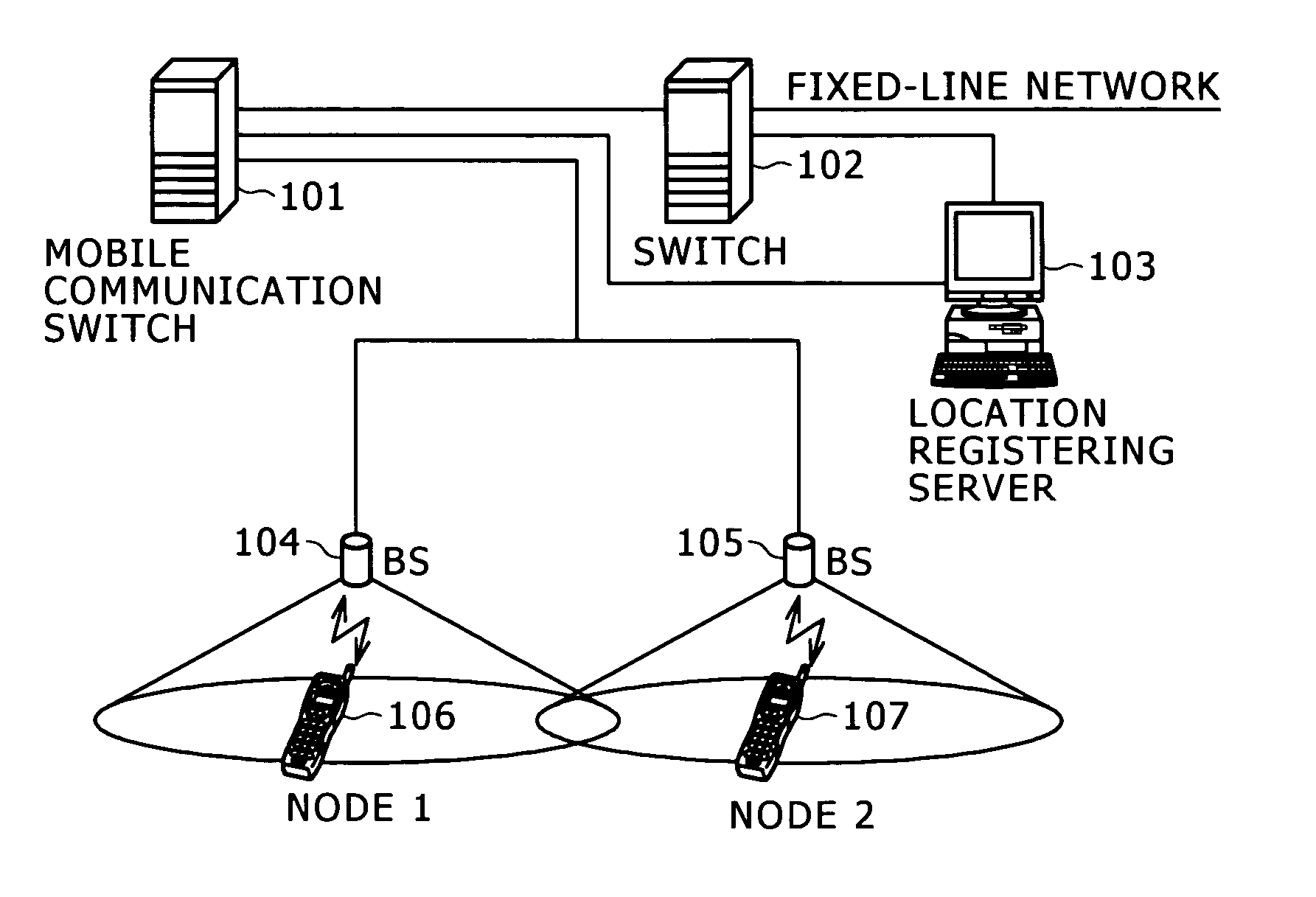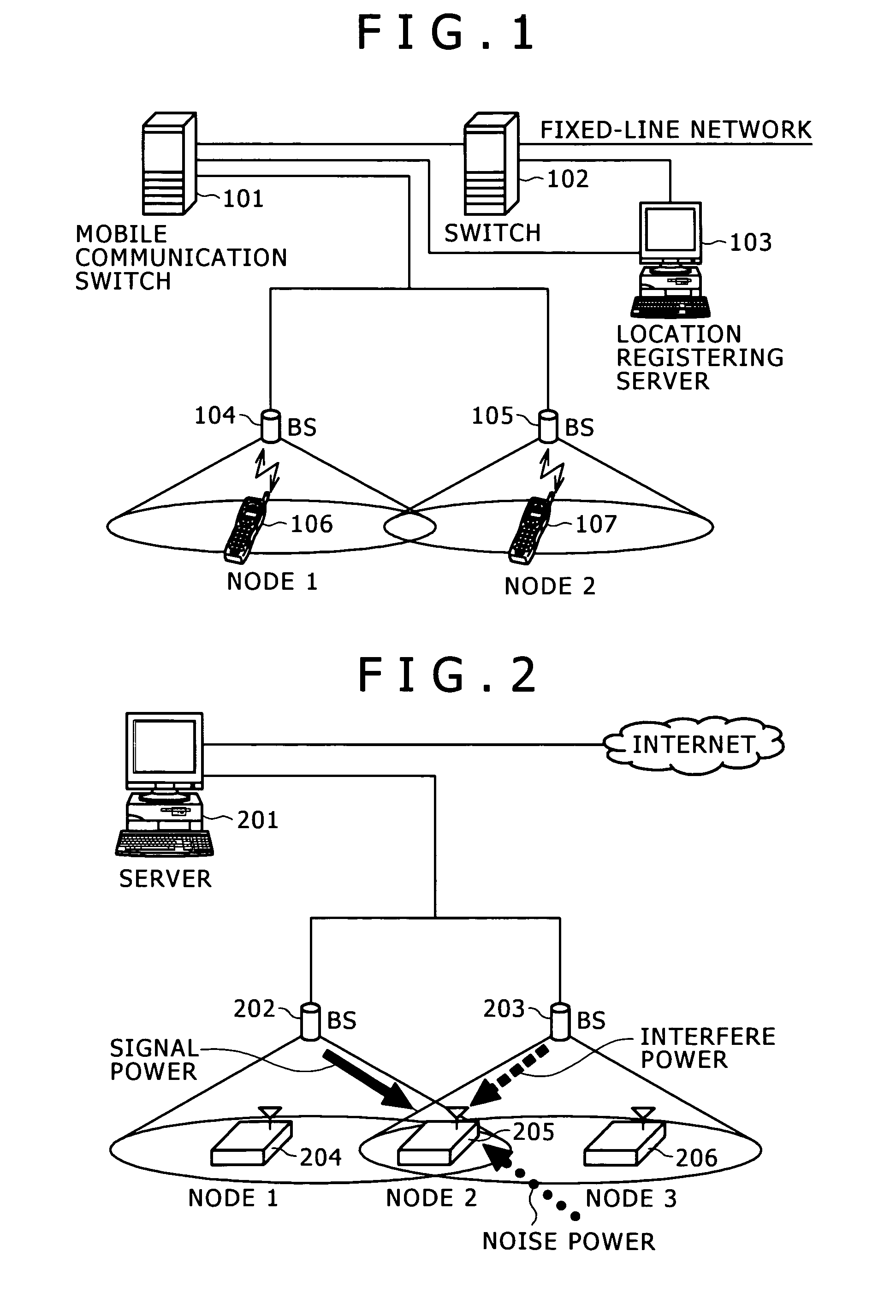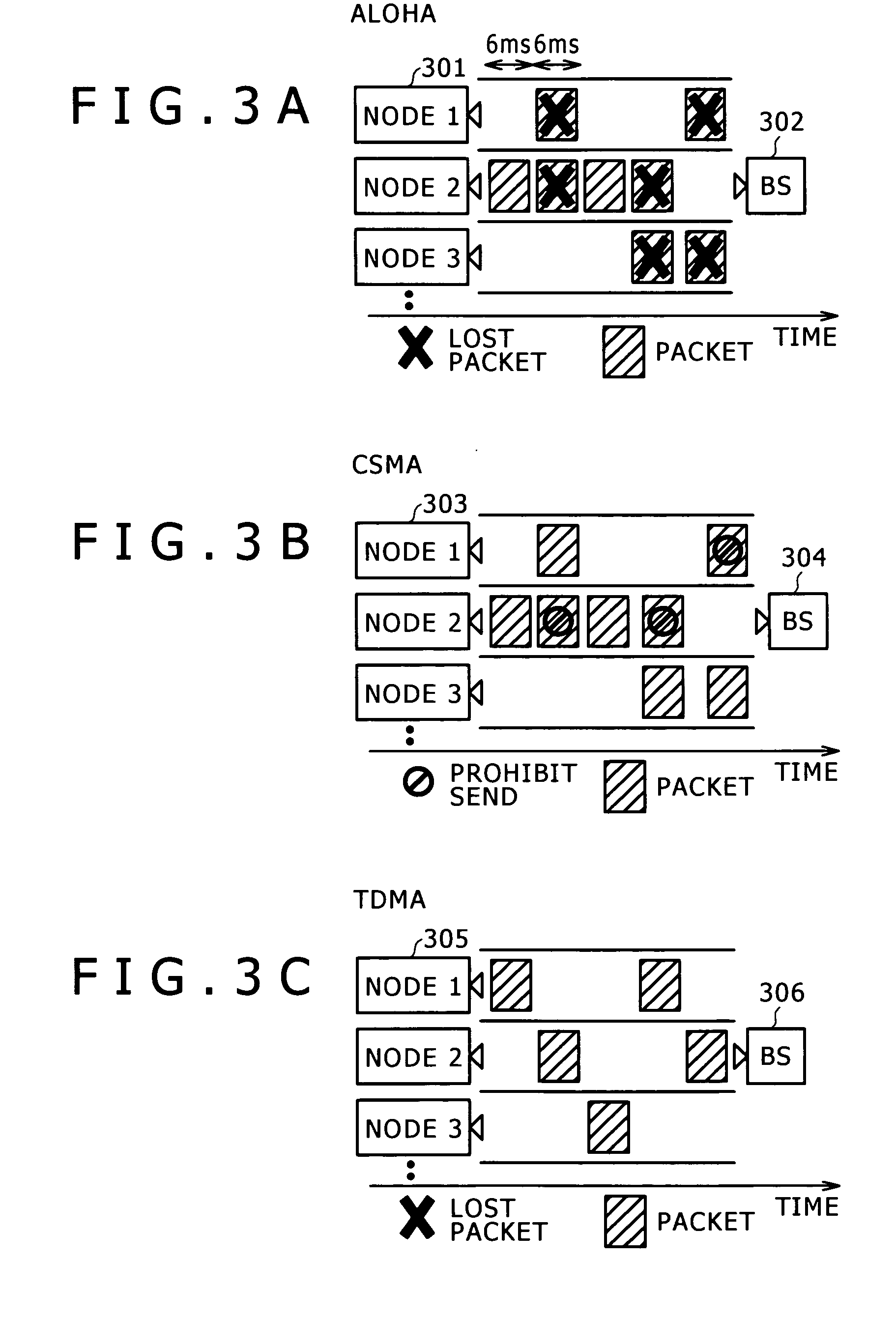Wireless Communication System Capable of Switching Protocol
a communication system and wireless technology, applied in data switching networks, power management, high-level techniques, etc., can solve the problems of low power consumption, increased probability of packet loss, and reduced system overall throughput, so as to achieve the effect of system overall throughput and system overall power consumption
- Summary
- Abstract
- Description
- Claims
- Application Information
AI Technical Summary
Benefits of technology
Problems solved by technology
Method used
Image
Examples
embodiment 1
[0046] As a first embodiment, a method of node device initiative wireless communication protocol switching is described. Here, ALOHA and CSMA are prepared as switchable wireless communication protocols. Both the ALOHA and CSMA do not require for a plurality of node devices to switch to an alternative one at the same time in the whole system. The ALOHA and CSMA methods allow each node device to carry out scheduling by itself without being instructed from the base station.
[0047] A wireless communication system shown in FIG. 2 is comprised of a management server 201, a plurality of base stations (202, 203), and nodes (204, 205, 206). Transmission data from nodes are transmitted wirelessly to the base stations and each base station transfers the received data to the management server 201. The management server 2 transfers the data received from the base station to a Web site on the Internet.
[0048] In the case of node initiative wireless communication protocol switching, any node can s...
embodiment 2
[0076] As a second embodiment, base station initiative protocol switching will be described. In the case of base station initiative protocol switching, more protocol types are applicable. For example, wireless communication protocols such as TDMA, BTMA, and ISMA methods, in which each node transmits packets in accordance with an instruction or synchronization information from the base station, can be added to selectable protocols.
[0077] In this case, for protocol switching, the base station has to send a protocol switching instruction to each node. Accordingly, overhead for communication for this purpose occurs, but the system can achieve enhanced control as a whole because it becomes possible to handle statistic information in the whole system in the case of base station initiative.
[0078] In similar to the case for the first embodiment, the base station in the present embodiment comprises a wireless unit (RF) 1001, a wireless communication protocol selecting unit (RCMSD) 1002, a ...
embodiment 3
[0096] As a third embodiment of the invention, management server initiative wireless communication protocol switching will be described. In the case of management server initiative wireless communication protocol switching, the load on a base station can be reduced. The flowcharts of the basic operations of a node, base station, and management server in the present embodiment are shown in FIG. 17, FIG. 18, and FIG. 19, respectively.
[0097] At the base station, the communication processing unit 1002 acquires data representing packet transmit counts (including retransmit counts) and packet receive counts at each node and the total sum of received packets at the base station and sends these data to the management server through the interface 1005. The management server receives these data by the interface 1101 and the communication processing unit 1102 calculates, in real time, the overall power consumption for all nodes and the overall throughput for all nodes as expressed in Equation...
PUM
 Login to View More
Login to View More Abstract
Description
Claims
Application Information
 Login to View More
Login to View More - R&D
- Intellectual Property
- Life Sciences
- Materials
- Tech Scout
- Unparalleled Data Quality
- Higher Quality Content
- 60% Fewer Hallucinations
Browse by: Latest US Patents, China's latest patents, Technical Efficacy Thesaurus, Application Domain, Technology Topic, Popular Technical Reports.
© 2025 PatSnap. All rights reserved.Legal|Privacy policy|Modern Slavery Act Transparency Statement|Sitemap|About US| Contact US: help@patsnap.com



